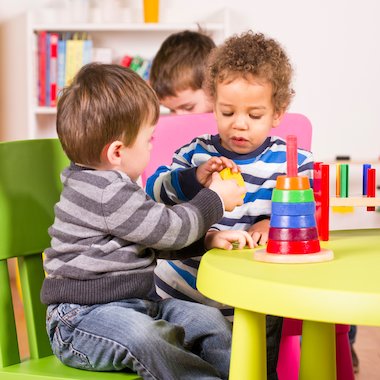Organising resources
Add to My Folder
In an early years’ setting, the effective use of resources plays a key part in delivering high quality care and education.

As a practitioner, it’s worth thinking about what a ‘resource’ actually is – basically anything that is brought into the setting to enrich or enhance the learning and development of your children. We tend to think of resources as physical items: blocks, paper, paint, sand, toys and books. But, of course, the most important resource of all is staff who are skilled in their role and who relate well to the children. In this article you’ll find lots of ideas about how to choose, organise and evaluate your physical resources. Choosing, organising and evaluating staff is typically a lot more complicated!
Quality and type of resources
When you’re making choices about the kind of resources to choose for your setting, ask yourself and your staff the following questions:
- Can we (children, staff) use this for more than one kind of activity? Avoid those plastic toys that have only one, very clear, purpose in mind.
- Do these resources offer the chance for open ended, heuristic play?
- Do we have a balance that covers all areas of learning within the EYFS?
- Do we have plenty of resources made out of natural materials, as well as plastic ones?
- How can we use these resources in a creative and imaginative manner?
- Do we want to invest in a high quality permanent resource, or a cheaper one that can be replaced more quickly?
Scholastic Resource Bank: Early Years - join today!
- Over 2,000 EYFS resources, activity ideas and games
- Perfect for anyone working or playing with children from 0 to 5 years old
- Unlimited access from just £1.25 per month
Already a member? Sign in below.
Published 1 July 2011
Reviews
You need to be signed in to place a review.